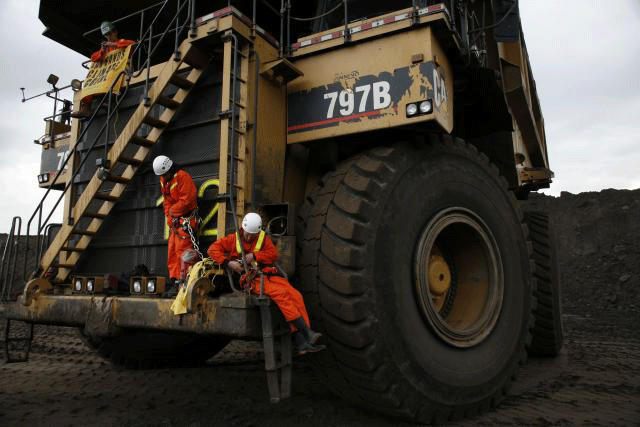
Greenpeace
Breaking out their familiar u-locks and mountain gear today, climate activists engaged in several acts of daring-do to spotlight Canada’s oil sands in advance of Wednesday’s meeting between President Barack Obama and prime minister Stephen Harper. Members of the Rainforest Action Network rappelled off the observation tower above Niagara falls to hang a 70-foot banner, and Greenpeace’s monkey-wrenchers blocked a giant oil sands dumptruck, locked themselves to it, and webcast the affair.
The first Washington meeting between the two leaders is expected to cover a range of issues, including climate change and energy. Massive strip mining of Alberta’s oil sands deposits–also known as tar sands–have made Canada the US’ top supplier of foreign oil but also caused it to miss its emissions targets under the Kyto Protocol. Obama and Harper are expected to look for ways to keep the sands pumping. They’ll likely discuss cooperation on carbon capture and storage technologies (also a potential boon to coal country). And enviros also fear they’ll seek ways to exempt the sands from the federal low-carbon fuel standard; producing oil from the sands emits up to three times the greenhouse gases as pumping and refining oil from the Middle East.
As the world’s largest oil reserve outside of Saudi Arabia, the tar sands presents the Obama administration with a vexing political problem. Relying on the sands is exacerbating global warming, creating an environmental wasteland the size of Florida, and sickening and displacing a vocal native community–outcomes at odds with Obama’s environmental and climate agenda. But the sands also insulate the US from the volatile Middle East. So far, there’s little doubt which is a bigger government priority: On his first official visit to Canada, in February, Obama was mum on the sands’ environmental footprint. And last month, Secretary of State Hillary Clinton approved a trans-border pipeline that will send us a whopping 800,000 barrels of tar sands oil a day–equivalent to 8 percent of net US oil imports. Environmentalists are challenging the approval in court.
The activist website Dirty Oil Sands has more on how green groups are targeting Harper leading up to the meeting.













